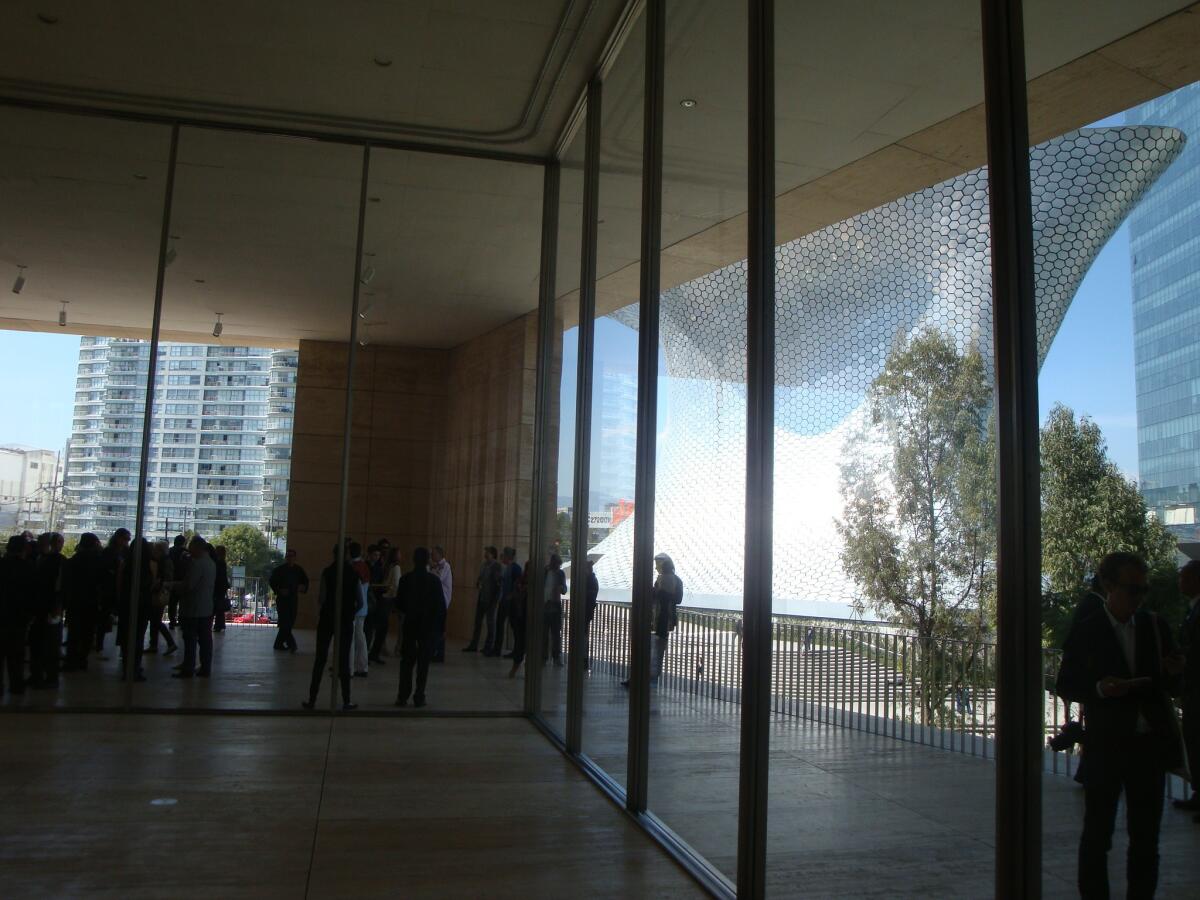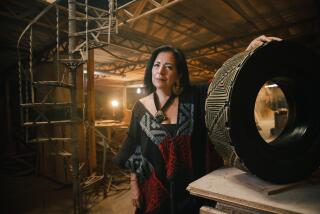Mexico City’s Museo Jumex to open with inviting attention to detail

- Share via
MEXICO CITY -- Hundreds of invited guests and members of the media gathered in this city’s upscale residential and shopping neighborhood of Polanco over a three-day holiday weekend (the Mexican Revolution Anniversary) for a series of previews, panel discussions and parties celebrating the new Museo Jumex.
An after-party in a sports facility following the contemporary art museum’s Saturday previews was scheduled to begin at 10 p.m. and conclude by 4 a.m., but I cannot report with any authority whether revelers did indeed depart at the approach of dawn.
The elegant museum, designed by British architect David Chipperfield, is the brainchild of Eugenio López Alonso, 46, heir to a processed-foods fortune and steward of what is reputed to be the largest contemporary art collection in Latin America. On Tuesday, when the museum opens its doors, the private collection begins to go public in a big way.
CHEAT SHEET: Fall arts preview 2013
I’ll have a full review later, including a look at the four debut exhibitions. For now, it’s worth noting the rather stark difference between the Museo Jumex and its flashy neighbor perhaps a hundred yards away.
The Museo Soumaya opened two years ago to house the eclectic art collections of Carlos Slim Hélu, said to be the world’s richest man. The Soumaya, clad in hexagonal silver-aluminum tiles, is eccentrically shaped -- think of a cross between a nuclear reactor’s cooling tower and a lady’s corset. Reached by climbing a grand stair, as if making a pilgrimage to a somewhat stubby mountaintop, the building tries very hard to be noticed.
Being noticed seems to be the strange form’s only motive. (Designed by Slim’s son-in-law, architect Fernando Romero, it was recycled from an observation tower planned for Beijing but never built.) Its cheerful ostentation clashes with the often conservative art displayed inside. Despite some indisputable gems, too often the pre-Columbian antiquities, Spanish Colonial paintings, Modern sculptures and other works of art are of indifferent quality.
The style of the Museo Jumex could not be more different. With elements indebted to such rigorous Modernist architects as Mies van der Rohe and I.M. Pei, Chipperfield has once again employed the robust aesthetic he previously brought to the design of nearly 20 museums and galleries internationally.
ART: Can you guess the high price?
The Neo-Modernist building stands on a broad plaza atop a classical podium. A gently trapezoid box clad in travertine is topped by a roof of deep sawtooth skylights. Except for the upper two of its four floors, where exhibitions are held, glass walls opening onto terraces add lightness and relaxed transparency.
The building’s most dramatic element is tucked deep within. There, a spectacular circulation stairwell of polished concrete walls lined in steel panels painted matte black recalls nothing so much as a 1960s sculpture by Tony Smith, the American architect-turned-artist.
The building is also deftly fitted to the cultural distinctiveness of this particular site. Several elements nod subtly in the direction of celebrated Mexican Modernist architects like Luis Barragán and Ricardo Legorreta. A sleek ground-floor cafe is indoors but, along one side, wide open to the outdoors and an urban street. The below-ground bookstore features a carpet-like floor of striped marble. Tall, dark, church-like wood doors pivot open on an off-center axis.
Yet Chipperfield’s beautifully integrated design is no mere pastiche. In this miniature “billionaires’ row” of art museums, the Soumaya is clunky and brash, its new neighbor sophisticated and refined. Contemporary art can be a challenge for a general public, but the impressive Museo Jumex is an easygoing, thoughtful and exquisitely detailed architectural invitation to come inside.
ALSO:
At spy exhibit, tradecraft trumps digital data dumps
Mark Stock’s ‘Hollywood: Uncovered’ paintings hint at mysteries
Hoarder of suspected Nazi-looted art: I won’t ‘give back anything’
More to Read
The biggest entertainment stories
Get our big stories about Hollywood, film, television, music, arts, culture and more right in your inbox as soon as they publish.
You may occasionally receive promotional content from the Los Angeles Times.











